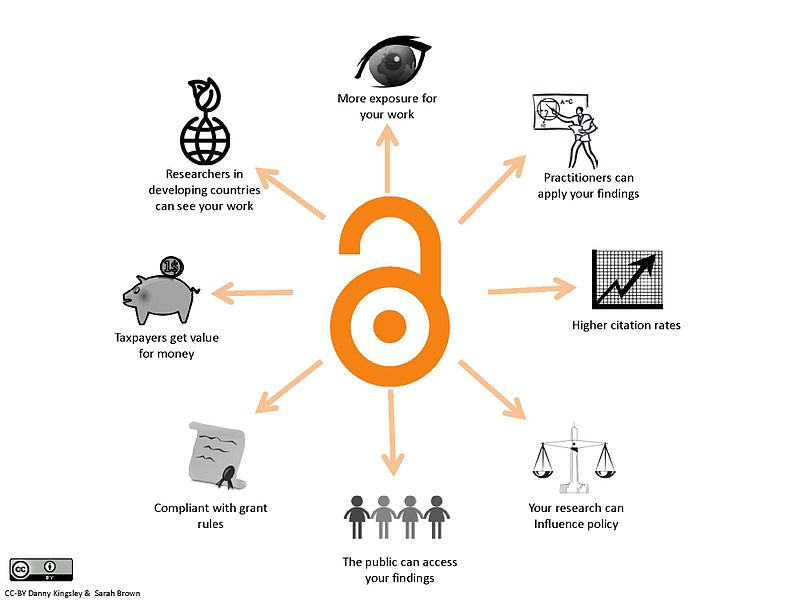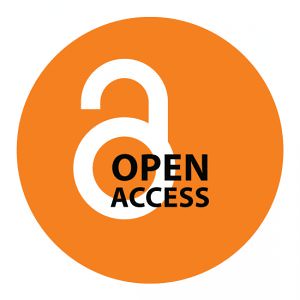Selecting an open access journal
What is an open access journal?
Open Access journals (or OA journals) are electronic-based journals that make their published content available freely to all immediately upon publication. They differ from traditional journals (toll access journals) in that their business model is not based on subscriptions, i.e. readers are not charged fees to access the journal’s content. For this model to work, authors can be charged an Article Processing Charge (APC), to move the cost from the readers to the authors.
Benefits of open access
The following infographic outlines the benefits of open access publishing, including:
- more exposure for your work
- practitioners can apply for your findings
- higher citation rates
- your research can influence policy
- the public can access your findings
- compliant with grant rules
- taxpayers get value for money
- researchers in developing countries can see your work

Open access models
Gold open access
Publish in a fully open access journal. This route may involve a charge but ensures immediate and permanent access to the work. The publication cost, known as an APC (Article Processing Charge), is either covered by the author/s or maybe their institution. Some researchers, intent on ensuring open access for their work, include anticipated APC costs in their list of funding requirements in grant applications. A list of fully open access journals can be found on the DOAJ website.
Image: “Gold open access logo” is in the Public Domain, CC0
Hybrid open access
Publish in a ‘hybrid’ journal. These journals are subscription journals that allow open access for individual articles on payment of a fee (APC). This fee is payable by the author/s or maybe their institution. Note: Some journal websites will refer to this option as Gold Open Access as the content is immediately available, but true Gold Open Access refers only to a publication in a fully open access journal.
Image: “Hybrid open access logo” is in the Public Domain, CC0
Green open access
Publish in a subscription-based journal with the full-text deposited into a trusted repository, i.e. a publicly accessible database managed by a research institution (such as RMIT’s Research Repository). This route relies on publishers allowing an author to share an earlier version of the work, whilst the publisher maintains ownership of the final published version.
Image: “Green open access logo” is in the Public Domain, CC0
Mandates
The Australian Research Council (ARC) and the National Health and Medical Research Council (NHMRC) Open Access policies aim to ensure that the discovery of publicly funded research is made available to researchers and the wider community. Refer to the Library guide for Open Access Publishing to see details regarding the ARC and NHMRC policies.
Copyright and open access
The copyright holder for published research works usually sits with either the author, or the publisher, depending on the author/publisher agreement.
The SPARC Author Addendum can be used to legally modify a publisher’s contract so that an author can retain the rights needed to both promote their research publications and achieve publishing goals. Using the addendum would allow an RMIT researcher to publish an accepted manuscript version of their publication in the RMIT Research Repository. Presently, RMIT does not have university wide policy or position on the negotiation of contracts with journals.
The Australian Open Access Support Group provides advice on the copyright implications of open access and the retention of copyright. The University’s Copyright Service can also provide further advice.
Finding open access journals and open access policies of publishers

DOAJ: Directory of Open Access Journals
The DOAJ lists 9000+ journals. It aims to cover all open access scientific and scholarly journals that use a quality control system to guarantee the content. It can be searched or browsed by title, subject, country, license or publication charges.
SHERPA/RoMEO – Publisher copyright policies & self-archiving
Search by journal title, ISSN or publisher to check publisher policies and for a summary of permissions to archive a version of the paper in an open access repository, including embargo conditions.
Read and publish agreements
The Library has signed up to a number of transformative agreements to support open access publishing. These Read and Publish Agreements repurpose existing expenditure to include both subscription fees and open access publishing fees. When publishing in journals covered by these agreements, you may be able to publish directly to open access with no transactional Article Processing Charges (APCs). Submit your publications as usual. If the Library has an agreement in place, the publisher will alert you to an open access option on acceptance of the eligible article. Exclusions and caps apply to some journals. More information about Read and Publish Agreements, including the publishers and journals.
Test Your Knowledge




